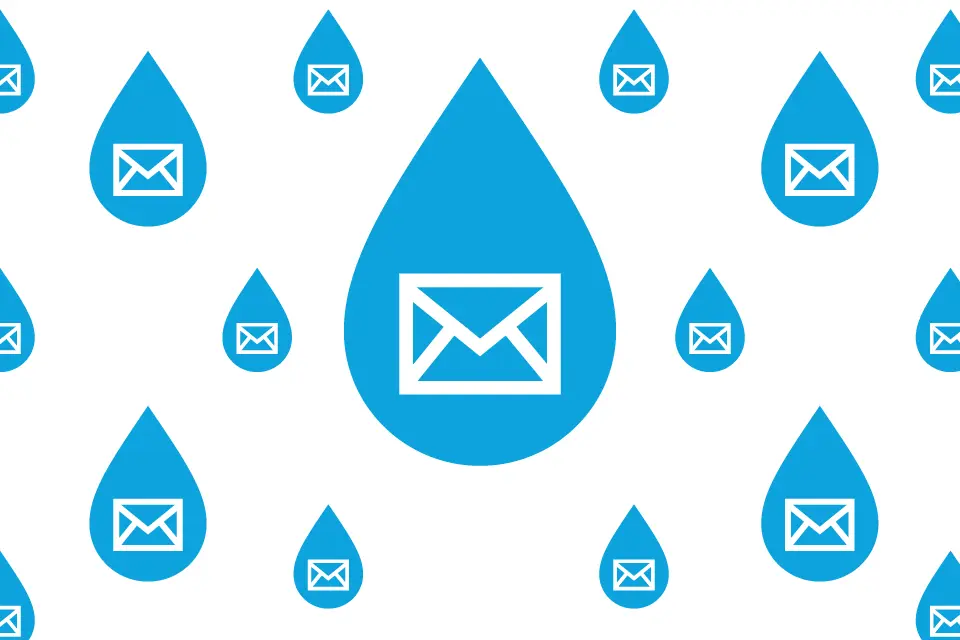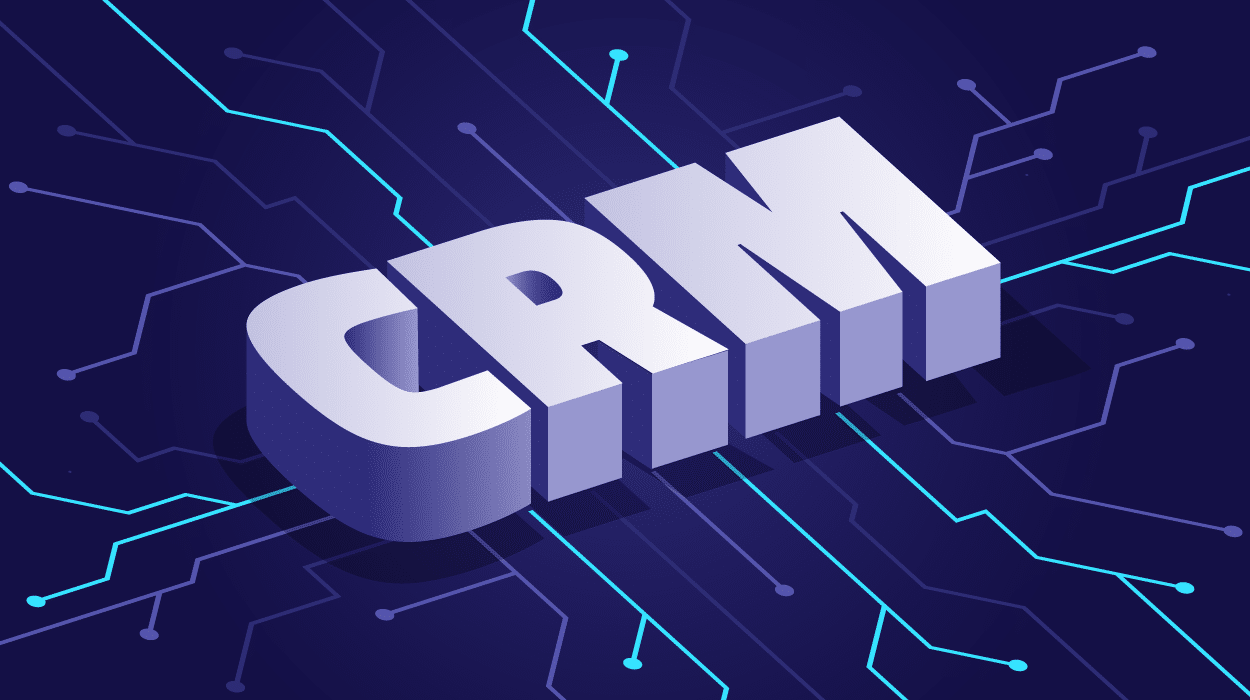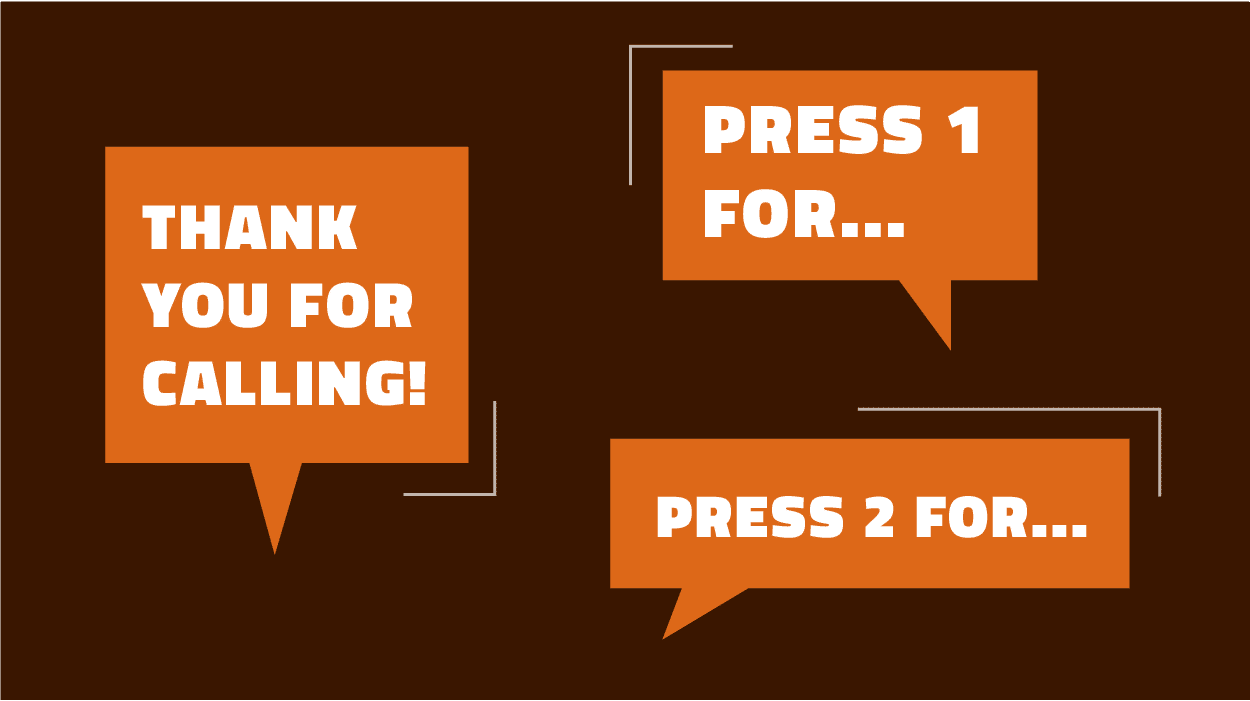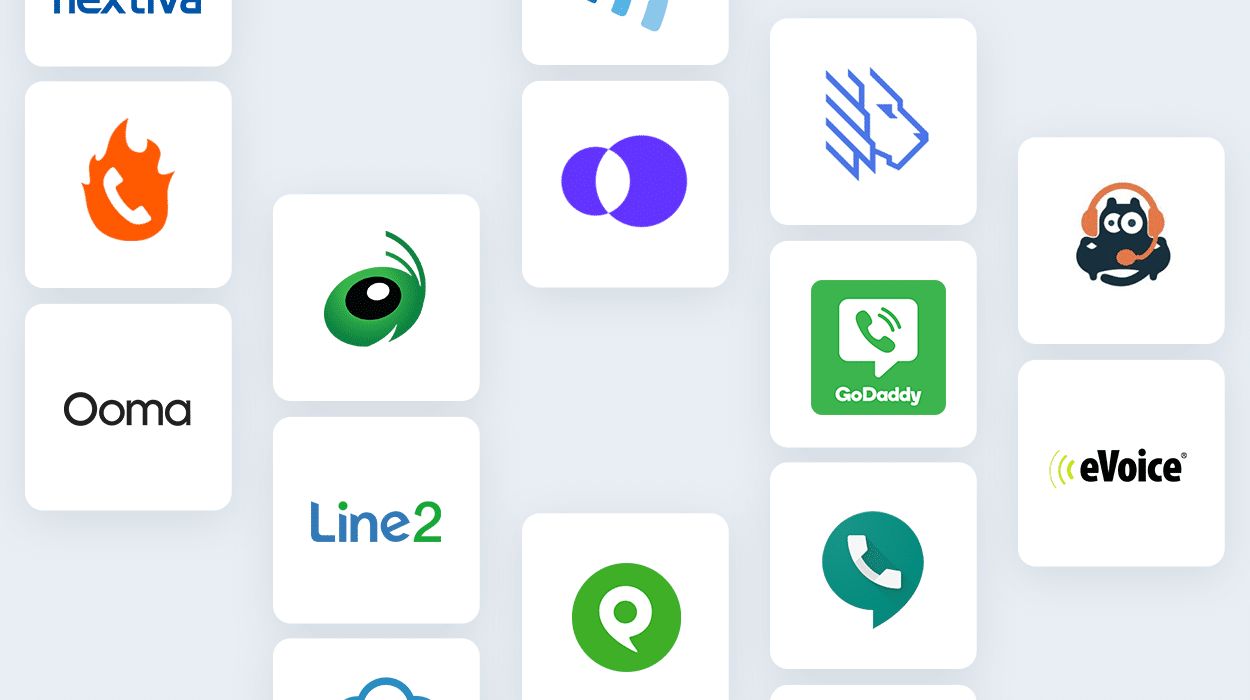You spend time and money generating leads, but not every lead is immediately ready to buy what you’re selling. To maximize sales and convert as many leads as possible, you must nurture your leads and automate the process.
That’s where drip email marketing comes into play.
What Is Drip Email Marketing?
A drip email marketing campaign is a sequence of automated email messages set up to target a particular audience, at a specific stage of your sales cycle, with the precise objective of moving the recipient to the next stage.
Drip email campaigns use behavioral emails that allow you to stay in touch with your prospects by feeding them the right information based on their demography or actions (hence the name behavioral emails).
The frequency of drip emails (the time gap between successive emails) can be pre-designated or triggered to respond to the actions leads take on the emails or website. Drips result in better conversions.
Why Drip Emails Work
If your business uses a one-size-fits-all ‘spray and pray’ approach to email marketing, you’re losing business. You have to tweak your messaging based on where a lead is in the sales cycle to keep leads engaged and on the path to conversion.
And that’s the idea behind drip email marketing, and it’s designed to increase engagement and conversions by sorting your leads into different groups based on their sales stage and then sending each group a custom email sequence that nurtures them into the next stage of your sales pipeline.
Examples of drip emails:
- Top-of-mind/Educational Email Sequences
- Limited-Time Promotions or Special Offer Email Series
- Onboarding/Training Email Sequences
- Re-Engagement Email Series
Drip emails do two things: increase engagement and boost conversion. There’s no better way for small businesses to stay engaged with their audiences than using drip emails for things like cart abandonment, trial renewals, booking abandonment, product recommendations, re-engagement, help to convert free audience to paid customers, and cross-sell and up-sell. And the best part is you can automate the process.
The flow of the emails can be automated based on the subscriber’s action using triggers. For instance, you can set up a welcome email for everyone who signs up for your newsletter, blog, or product free trial. Then set up a series of white papers, videos, eBooks, and product demos based on the interest levels of your subscribers.
Let’s look at some of the best practices for drip email marketing.

5 Drip Email Marketing Best Practices
1. Set Business Goals
Setting up a campaign requires first defining your goals: more subscribers, more free trial signups, or more webinar participants.
Identifying the goal before setting up a campaign helps to nurture leads better and measure campaign success.
Define goals and your plan campaigns to achieve them:
- What do you want your prospects to do after they receive your email?
- Do you want them to opt for free signups?
- Do you want to increase paid customers?
- Do you want more referrals from the existing audience?
- Do you want more subscribers to the social platforms?
2. Understand Your Audience
Understanding your audience is the key to segmenting groups within your drip email campaign. You want to segment your audience, based on their action or demography, before designing your campaigns.
The deeper your segmentation, the more personal your messages can be. This could include prospects who are new visitors to your website, customers who have purchased from you, subscribers of your newsletters, and more.
Example include:
- Create a segment of new prospects who subscribed to your blog page and hit a welcome email.
- Create a segment of audiences who recently purchased your product by clicking on the Facebook advertisement and hit an email with purchase details/ product features/ product recommendations.
- Create a segment of customers for product A, and send an email regarding the webinar on product A enhancements.
- Create a segment of the audience who signed up for a service but never turned up, and send a reminder email if they would want to reschedule an appointment with you.
- Create a segment of subscribers who recently downloaded your application, and send emails on application features and customer support in case they need you.
Sort your subscribers or leads into groups based on where they are in your customer lifecycle. The better you understand who your audience is, the more effectively you can tailor your messaging.
Once you’ve segmented your audience, it’s time to set up the email flow for each group.
3. Measure Results
Of course, drip email campaigns can be automated, but there are things to monitor and take manual action on. Revamping a segment and strategizing your efforts based on audience engagement with initial emails is critical in setting up further steps.
Consistently measure the click and open rates, and try to understand their effect on the ROI.
You should continually tweak your emails based on engagement metrics.
For example:
- No open rates? Change the subject lines by including offers/coupons.
- No click-throughs? Improve the email’s content, design, call-to-action, and layout of the email.
- No conversion rates? Send more lead nurturing emails – videos/eBooks/white papers/product demos.
- No engagement at all? Review campaign goals and re-segment your audience.
Pay attention to the metrics you track and continually optimize your campaigns.
4. Use The Right Tools
A good marketing automation tool provides you with everything you need to create powerful drip campaigns to flow leads through your sales pipeline easily.
When marketing automation is integrated with your CRM, segmenting the audience based on lead scores, referring demography, and behavior is easy.
You can configure and automate your entire drip email marketing campaign. This includes pulling your email list for each send, executing scheduled email sequences, scoring leads based on their actions, and passing them over to sales for follow-up once they are qualified.
You can also use pre-packaged templates to ensure your emails are always well-designed and professional.
The following tools are a great place to start:
- Salesmate
- Marketo
- Mailchimp
- Zoho
- Customer.io
- Constant Contact
- HubSpot
- Pardot
- Campaign Monitor
- GetResponse
- Drip
Using a CRM with built-in marketing automation gives you access to lead information and actions, social media connectors, and analytics that makes drip marketing campaigns easy to execute.

5 Types Of Drip Campaigns Every Startup Should Use
With drip campaigns, you’ll secure the attention and encourage your audience to take action. That can translate into increased brand trust and higher revenues, two pillars of business growth.
#1: Welcome Email Campaign
People get emails every day and don’t open them all. But there is one type of brand email that most people do open — a welcome email.
One recent study found that the average open rate for welcome emails was 82%, far higher than the 21% average open rate for all emails.
Why are welcome emails so effective? The short answer is people expect them because they’ve taken deliberate action on a website, like signing up for a mailing list or making a purchase.
You need a compelling email to make the most out of this opportunity. Then, continue the momentum with a welcome series.
How effective is this? After deploying a three-step welcome campaign, one brand saw average open rates of around 40%.
High engagement numbers like these will drive heightened awareness and more sales.
#2: Remarketing Email Campaign
While your welcome emails focus on people who’ve interacted with your website for the first time, you can reach people who visited but didn’t take action.
How? The answer is a remarketing campaign.
Remarketing emails are triggered by tracking pixels or website cookies. You’re primarily targeting people who have done business with you before. That means you’ve gathered some information and email details from them and can use them each time they visit.
Imagine you’re a clothing retailer, and a visitor you know spends significant time on a page for one of your best-selling shirts. You can assume that the shopper was considering purchasing that item and deploying a multi-step remarketing email series.
Here’s how it works:
- Remind them about the shirt by highlighting some of its top-selling points
- Send them a time-limited discount on the item to motivate a purchase
- Let them know about any sales or price stops affecting the item
#3: Abandoned Cart Email Campaign
Cart abandonment is an enduring problem in retail. Hundreds of studies have examined the issue and found that abandonment rates typically range between 55% to 80%.
If you can recapture even a small percentage of those lost opportunities, you can gain a significant boost in revenue.
Consumer research reveals high open and conversion rates for abandoned cart emails.
Here’s what studies show:
- Abandoned transaction open rates have ranged between 38% and 42%
- Sending abandonment emails within 24 hours can recover more than 20% of lost sales
- Conversion rates for retailers’ abandoned cart emails averaged around 28%
That’s why abandoned cart drip campaigns are a must in eCommerce.
#4: Customer Retention Email Campaign
Every marketer knows that acquiring new customers costs more than retaining existing ones.
Unfortunately, today’s customers have unlimited access to information online and can quickly shift to a competitor. But regular email communications can keep your business top-of-mind and foster brand trust.
What kind of emails can you send customers?
Here are a few ideas:
- Send special insider discounts to reward customers for staying loyal
- Give customers a “sneak peek” into new products
- Celebrate milestones like anniversaries of a first purchase or contract
- Remind customers about critical dates like renewals or expiring offers
- Say “thank you” to show customers that you appreciate your business
#5: Re-Engagement Email Campaign
Sometimes, customers stop buying from you. But a few well-constructed emails can bring them back.
You’ll need to establish your definition of an inactive customer. Is that someone who hasn’t purchased in six months or a year? Or do you want to reach people who’ve stopped opening your emails?
Equipped with that insight, you can build your re-engagement campaign strategy.
Proven tactics that work include:
- Using an intriguing subject line that sparks curiosity and motivates people to open your email
- Reminding people what they’re missing by not engaging with or buying from you
- Offering something special, like a discount or a free gift
Sending drip messages can help you reconnect with dormant customers and rekindle relationships.

How To Set Up Your Drip Campaigns
Ready to create your drip campaign? Follow the five steps below to create email marketing campaigns that get results.
Step 1: Build Your Customer Segments
Not all customers are alike, so one-size-fits-all emails aren’t a good idea. Segmenting your customers by demographics and/or the last activity with your company can help you adapt messaging for your audiences.
Step 2: Determine Your Campaign’s Flow
Once you’ve established segments, you can conceptualize the flow of your outreach. You’ll want to consider how many emails to send and how frequently customers will receive them.
Some drip campaigns may only include two emails sent a week apart. Others can include multiple messages over months to nurture relationships. It depends on the campaign purpose and the needs of your business and audiences.
Step 3: Create Your Content And Visuals
With your campaign plan, your next step is crafting content and imagery. Remember your brand messaging and visual identity while customizing your campaign content.
Also, ensure every email element — from the headline to the call-to-action (CTA) is clear and actionable. Readers should know exactly what you want them to do and how to take the following steps.
Step 4: Automate Your Campaigns
While you can send drip campaigns manually, that approach wastes time. Instead, rely on email marketing technology to automate your distribution.
With email marketing technology, you’ll also gain detailed analytics about campaign performance. Put that data to work to know what works and what needs refinement. Another benefit is that it’s easy to copy and revise campaigns so that you can build on a foundation that works.
Step 5: Test And Update Your Campaigns
Setting up your drip campaign doesn’t mean your email marketing is complete. As your audience needs and offerings evolve, you must modify your email outreach.
It would help to consistently examine your campaign metrics, such as open and click-through rates. That way, you’ll see which emails resonate with your audiences.
Better yet, you can run deliberate A/B tests to assess subject lines and copy, and offers to help you continually refine your email program.
Test, revise, and test again. That’s the only way to keep up with the fast pace of change in today’s marketplace.
Reach More People With Drip Campaigns
Whatever the focus or scale of your business, email marketing is a powerful asset that empowers you to expand your reach.
You can build a rapport with your audiences, differentiate your business, and drive sales through email. However, an unstructured or haphazard approach won’t achieve the desired results.
By running drip campaigns, you can keep your messages in front of people at every stage of the customer journey.
You can welcome new customers, reach out to remind them about visits to your site, and thank them for staying loyal. If customers have grown disengaged, you can recapture their attention with a re-engagement strategy.
Following a consistent process and using email marketing technology can streamline your efforts. In addition, reviewing campaign metrics can ensure your emails evolve to match your readers’ expectations.
With a steady focus on email marketing, you can stay in touch and build mindshare with your audiences — and that can fuel new levels of business success.
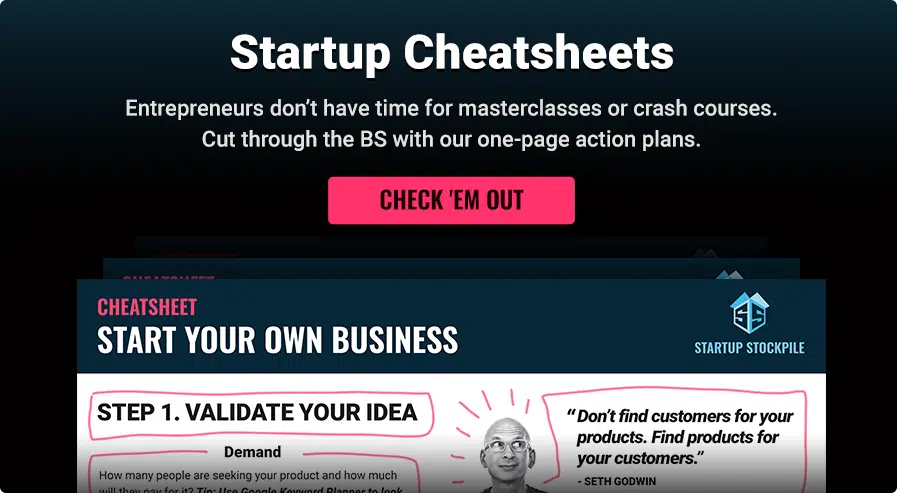
Editor’s Note: Want more handpicked content to help you build your business? Subscribe to our monthly newsletter.


